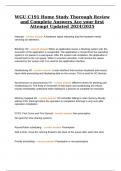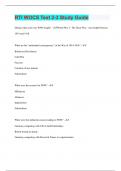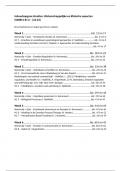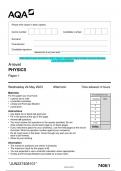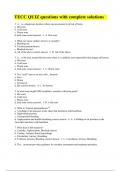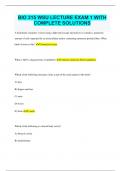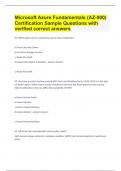Exam (elaborations)
WGU C191 Home Study Thorough Review and Complete Answers Ace your first Attempt Updated 2024/2025
- Course
- Institution
WGU C191 Home Study Thorough Review and Complete Answers Ace your first Attempt Updated 2024/2025 Interrupt - correct answer A hardware signal indicating that the hardware needs servicing (or attention). Blocking: I/O - correct answer When an application issues a blocking system call, the exe...
[Show more]
